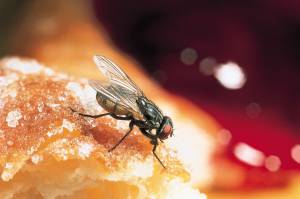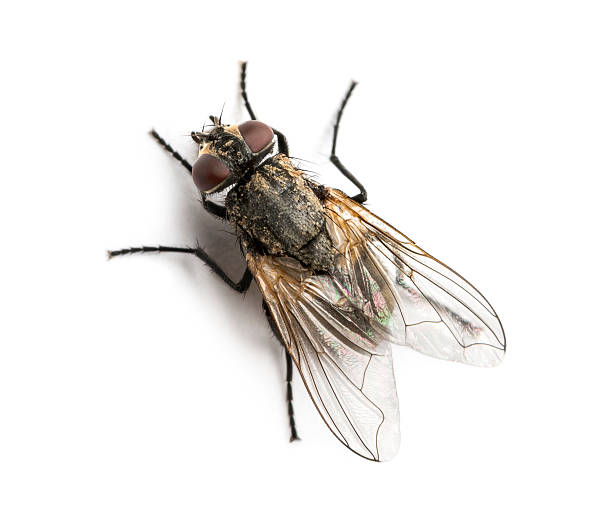In most cases, the odd house fly here and there is nothing to worry about. But a constant swarm of these buzzards can be a nuisance and an eyesore – plus a potential health risk to humans and animals.
The key to a safe and healthy environment is to take preventive measures and respond to the early signs of an infestation. While DIY methods can provide temporary relief, they often fail to remove the source of the problem – leaving the infestation to worsen.
Help from a licensed pest controller is the most effective way to achieve long term relief from house flies.
Contact All Bugs today for free advice and a quote on the removal of house flies.
Appearance and Lifecycle
When you think of the word ‘fly,’ the appearance of a traditional house fly is most likely what comes to mind, including their:
- Black or grey colour
- One pair of wings
- Length of 4 to 7.5mm
- Large compound eyes – which gives them a wide field of vision and super-fast reflexes
In terms of lifecycle, flies have a relatively short lifespan of only a few months. But they can repopulate very quickly. How? Because the average female housefly can lay anywhere from 500 to 900 eggs during her lifetime.
Risk of Disease
 Aside from being a nuisance, houseflies do have the potential to carry and transmit a range of diseases to humans and animals – such as food poisoning, cholera, conjunctivitis, dysentery, and salmonellosis.
Aside from being a nuisance, houseflies do have the potential to carry and transmit a range of diseases to humans and animals – such as food poisoning, cholera, conjunctivitis, dysentery, and salmonellosis.
This is largely due to the house fly’s diet, which mainly consists of faeces, rotting produce, trash, and spoiled meat. After feeding, the fly carries the bacteria from the food source and transmits it to any surface they land on.
House flies also tend to defecate and vomit wherever they land and feed. Unfortunately, if the fly is infected, so too is their digestive system. As a result, their vomit and faeces could transmit disease to an unsuspecting human or animal.
Common signs of a House Fly Infestation
- Ongoing Presence of Flies
Houseflies are usually attracted to leftover or exposed food sources, pools of water (i.e. pot plants, gutters, and puddles), uncleaned spills, leaking drain pipes, and dripping air conditioner units.
- Patches of Black or Brown Spots
Essentially, these are the house fly’s droppings. You can find them anywhere that the house flies land or feed on. Such as walls and ceilings, windows, light sources, and kitchen countertops, to name a few.
How to reduce the risk of a Housefly Infestation
- Plant select herbs and flowers in your garden to keep flies away from your house. Plants that flies avoid include basil, marigold, lavender, bay leaves, and catnip.
- Combine a mixture of vinegar and dish soap into a tall glass. Wrap cling film over the top, and poke a few holes in the cling wrap. The sweet mixture will entice the house flies, who will fly through the holes and be unable to exit, eventually drowning.
- Quickly clean up spills
- Empty the kitchen bins every night before you go to sleep.
- Have a secure lid over your kitchen bins
- Attach a flyscreen to every window in your house or business
- Avoid keeping any doors to the outside open for extended periods of time
When to call the pest experts
Professional pest controllers are experts when it comes to fly control.
By using their advanced knowledge and the latest technology, they can identify the species of fly, the most likely entry points, and put in place an effective treatment plan to get rid of the infestation – and prevent a future infestation.
On top of this, a licensed pest controller can give you useful preventive advice that relates to your unique circumstances. Thus, you will keep your home or business free of flies for the long term.
Best of all? Their treatment plans are non-disruptive and eco-friendly. So you can go about your daily business as usual.
Got a problem with flies? Contact All Bugs today for free advice and a quote for the safe and effective removal of flies.



Leave a Reply